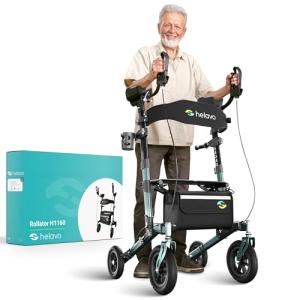The 10 Most Worst Modern Walker Fails Of All Time Could Have Been Prev…
페이지 정보

본문

The Evolution of the Modern Walker: A Comprehensive Look
Walking has actually long been an essential human activity, important for mobility and self-reliance. The modern walker, an important tool for those who require extra support while traversing the world, has actually developed significantly throughout the years. This post will check out the advancement, types, benefits, and frequently asked questions about modern walkers, functioning as a guide for anybody considering this mobility aid.
A Brief History of Walkers
The history of walkers can be traced back to the early 20th century. Originally developed for rehabilitation, the first designs were standard and provided restricted support. Nevertheless, as our understanding of mobility requires Advanced Walker, so too did the design and functionality of walking help.
Timeline of Walker Development
| Year | Development |
|---|---|
| 1930s | The very first walkers were created, primarily for rehabilitation purposes. |
| 1960s | Intro of foldable designs for easier storage and transport. |
| 1980s | Adoption of Lightweight Rollator Walker materials, boosting mobility without compromising strength. |
| 1990s | Introduction of walkers with wheels, helping with smoother movement. |
| 2000s | Modern walkers integrated with extra features such as seats and storage compartments. |
The advancement of walkers highlights not just developments in engineering and materials but also a growing awareness of varied user needs.
Kinds Of Modern Walkers
Today, there is a wide range of walkers available to accommodate different ages, mobility levels, and user preferences. Below is a list of the most typical types:
Standard Walkers: Basic designs without wheels, offering maximum support. Suitable for those requiring considerable stability.
Wheeled Walkers (Rollators): Equipped with two or four wheels, these walkers permit smoother motion. Lots of included integrated seats for resting and storage for personal products.
Posterior Walkers: Designed to promote a more natural walking style, these are utilized by individuals recuperating from surgery or injury.
Travel Walkers: Lightweight Walker and collapsible, ideal for seniors and those on the go.
All-Terrain Walkers: Built with larger wheels and strong frames, ideal for outdoor use on uneven surface areas.
Comparison Table of Walker Types
| Type | Wheels | Seat | Stability | Mobility | Best For |
|---|---|---|---|---|---|
| Requirement Walker | No | No | High | Moderate | Users needing max support |
| Wheeled Walker | Yes | Yes | Moderate | High | Active users requiring mobility |
| Posterior Walker | No | No | High | Moderate | Rehab from injuries |
| Travel Walker | No/Yes | Optional | Moderate | Extremely High | Frequent travelers |
| All-Terrain Walker | Yes | Yes | Moderate | Moderate | Outdoor enthusiasts |
Benefits of Using a Modern Walker
Using a walker can considerably boost the lifestyle for individuals with numerous Mobility Assistance difficulties. Here's a breakdown of the main advantages:
- Increased Stability: Walkers lower the danger of falls, using support and balance.
- Independence: They empower users to move freely without dependence on others.
- Improved Posture: Walkers encourage users to preserve an upright position, which can ease neck and back pain.
- Adaptability: With choices fit for different surfaces and needs, walkers can be customized to specific preferences.
- Enhanced Mobility: Many walkers are created for ease of movement, permitting more active way of lives.
Regularly Asked Questions (FAQ)
1. What size Easy-To-Use Walker do I need?
Picking the ideal size is crucial for comfort and efficiency. Preferably, walkers need to be adjusted so that the handlebars are at wrist height when standing upright. Many models are adjustable for height.
2. Can I use a walker for long-distance walking?
While walkers supply exceptional support and stability, it is best to talk to a health care professional regarding long-distance use, as fatigue can embed in with time.
3. Do I require a prescription to acquire a walker?
In a lot of scenarios, a prescription is not required, but it's helpful to seek advice from with a physiotherapist or medical professional, especially for those with specific medical conditions.
4. How do I maintain my walker?
Routine upkeep is crucial for safety and performance. Inspect for loose screws, clean the tires or wheels, and check the frame for any wear or damage.
5. Are walkers covered by insurance?
Lots of insurance coverage strategies cover walkers, especially when recommended by a medical professional. It's a good idea to talk to your insurance coverage provider for particular standards.
The modern walker has come a long way from its early styles, evolving into a flexible aid that can accommodate a large range of mobility requirements. With numerous types available, it is vital to think about specific requirements before making a purchase. By comprehending the types, benefits, and upkeep of walkers, users can choose the ideal model to boost their mobility and self-reliance. As technology continues to advance, we can unquestionably expect a lot more innovative styles in the future, additional empowering individuals with mobility challenges.
- 이전글Establishing Trust: Factors to Consider in a Survey Firm 25.11.16
- 다음글10 Unexpected Dulce De Gusto Coffee Machine Tips 25.11.16
댓글목록
등록된 댓글이 없습니다.
